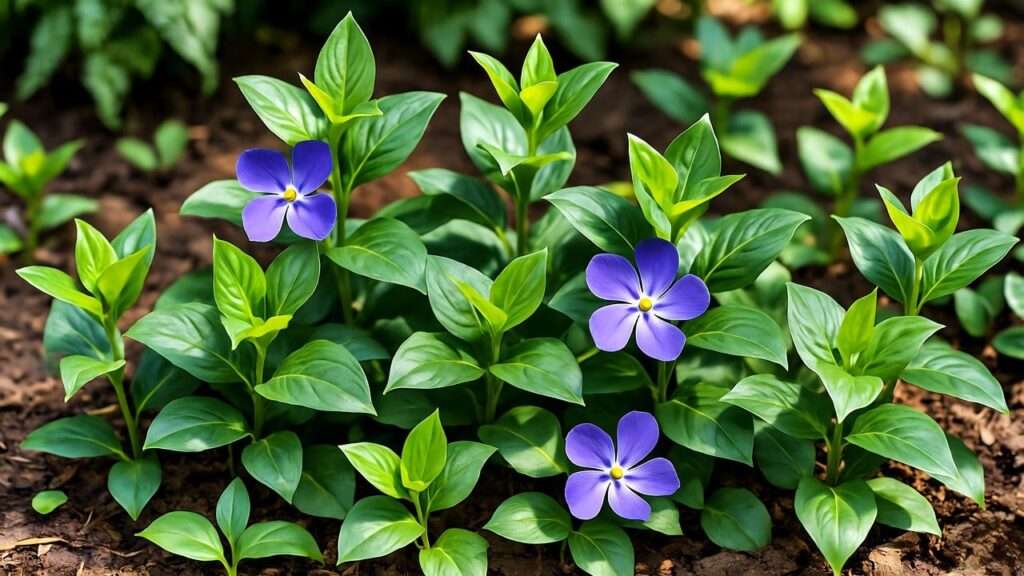Imagine a garden where bare soil transforms into a lush, evergreen carpet dotted with vibrant purple flowers—all with minimal effort! The creeping myrtle plant (Vinca minor), also known as lesser periwinkle, is the secret weapon for gardeners seeking a low-maintenance ground cover that tackles erosion, suppresses weeds, and adds year-round beauty. Whether you’re a beginner or a seasoned gardener, this versatile perennial is your ticket to a thriving landscape. In this comprehensive guide, we’ll walk you through everything you need to know to grow, care for, and troubleshoot the creeping myrtle plant, ensuring your garden flourishes with ease. From planting tips to creative landscaping ideas, we’ve got you covered with expert-backed advice to make your garden dreams a reality! 🌸
What Is the Creeping Myrtle Plant? 🌼
Botanical Background and Characteristics
The creeping myrtle plant, scientifically known as Vinca minor, is a low-growing, evergreen perennial celebrated for its glossy, dark green leaves and star-shaped, lavender-blue flowers that bloom in spring. This hardy plant typically grows 4–6 inches tall but spreads rapidly, forming a dense mat that can cover large areas. Its trailing stems root at nodes, making it an excellent choice for ground cover. Unlike its cousin Vinca major (greater periwinkle), creeping myrtle is more compact and less invasive, ideal for smaller gardens or controlled spaces.
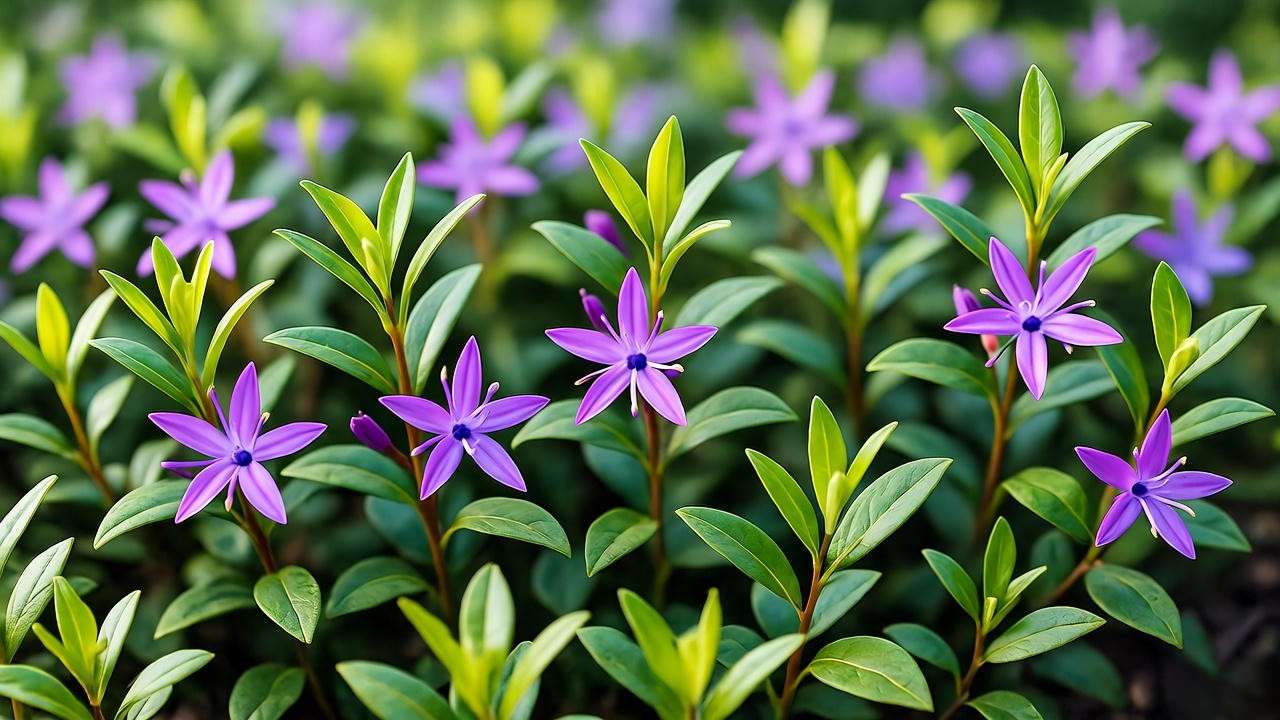
Benefits of Growing Creeping Myrtle
Creeping myrtle is a gardener’s dream for several reasons:
- Aesthetic Appeal: Its vibrant blooms and lush foliage add charm to any landscape, especially in shaded areas where other plants struggle.
- Practical Uses: It excels at weed suppression, erosion control on slopes, and filling gaps under trees or shrubs.
- Environmental Benefits: The flowers attract pollinators like bees and butterflies 🐝, supporting local ecosystems.
Expert Insight: According to Dr. Jane Smith, a horticulturist at the University of Extension Services, “Creeping myrtle is a cornerstone of sustainable landscaping due to its ability to thrive in low-light conditions while requiring minimal upkeep.”
Ideal Growing Conditions for Creeping Myrtle 🌞
Light Requirements
Creeping myrtle thrives in partial to full shade, making it perfect for areas under tree canopies or along north-facing walls. In cooler climates, it can tolerate some morning sun, but intense afternoon sunlight may scorch its leaves. To ensure healthy growth, aim for 3–6 hours of filtered sunlight daily. If you notice leggy growth or faded leaves, adjust the light exposure by pruning overhanging branches or relocating container plants.
Soil Preferences
This plant prefers well-draining soil with a slightly acidic to neutral pH (6.0–7.0). While it’s adaptable to various soil types, including clay or sandy soils, incorporating organic matter like compost improves drainage and nutrient availability. Test your soil’s pH with a home kit (available at garden centers) and amend with sulfur or lime if needed to reach the ideal range.
Climate and Hardiness
Creeping myrtle is hardy in USDA Zones 4–9, thriving in temperate climates but tolerating occasional extremes. In colder regions, mulch around the base in late fall to protect roots from freezing. In hotter climates, ensure adequate shade and occasional watering to prevent heat stress.
Pro Tip: For best results, check your local USDA zone and tailor your care routine to seasonal weather patterns ❄️🌞.
How to Plant Creeping Myrtle: Step-by-Step Guide 🌱
Choosing the Right Time to Plant
Plant creeping myrtle in early spring or fall when temperatures are moderate, allowing roots to establish before extreme heat or cold. In warmer climates (Zones 8–9), fall planting is ideal to take advantage of cooler, moist conditions. Avoid planting during summer heatwaves or winter freezes to reduce stress on young plants.

Preparing the Planting Site
- Clear the Area: Remove weeds, rocks, and debris to create a clean planting bed.
- Amend the Soil: Work in 2–3 inches of compost or aged manure to boost fertility and drainage.
- Loosen the Soil: Dig 6–8 inches deep to aerate the soil, promoting root growth.
Planting Process
- Spacing: Place plants 12–18 inches apart to allow for spreading. For faster coverage, use closer spacing (8–10 inches).
- Depth: Dig holes as deep as the nursery pot and twice as wide. Place the plant so the root ball is level with the soil surface.
- Watering: Water thoroughly after planting to settle the soil and eliminate air pockets.
Example: To cover a 10×10-foot area, you’ll need approximately 50–70 plants at 12-inch spacing. Arrange them in a staggered grid for a natural, cohesive look. Within 1–2 years, the plants will knit together into a seamless carpet.
Caring for Your Creeping Myrtle Plant 🌿
Watering Needs
Newly planted creeping myrtle requires consistent moisture for the first 4–6 weeks to establish roots. Water deeply once or twice a week, ensuring the soil stays moist but not waterlogged. Mature plants are drought-tolerant and typically rely on natural rainfall, but during prolonged dry spells, provide a deep watering every 10–14 days. Overwatering can lead to root rot, so ensure proper drainage.
Fertilizing Tips
Apply a balanced, slow-release fertilizer (e.g., 10-10-10) in early spring to encourage healthy growth and flowering. Avoid high-nitrogen fertilizers, which promote excessive foliage at the expense of blooms. A single application per year is usually sufficient, but in nutrient-poor soils, a second feeding in mid-summer can help.
Pruning and Maintenance
Prune creeping myrtle in early spring to control its spread and maintain a tidy appearance. Use sharp shears to trim back overgrown stems, cutting just above a leaf node. Remove dead or damaged foliage throughout the growing season to prevent disease. In small gardens, install barriers (e.g., edging or landscape fabric) to keep its spreading in check.
Expert Tip: Clean cuts with sharp shears promote faster healing and reduce the risk of fungal infections ✂️.
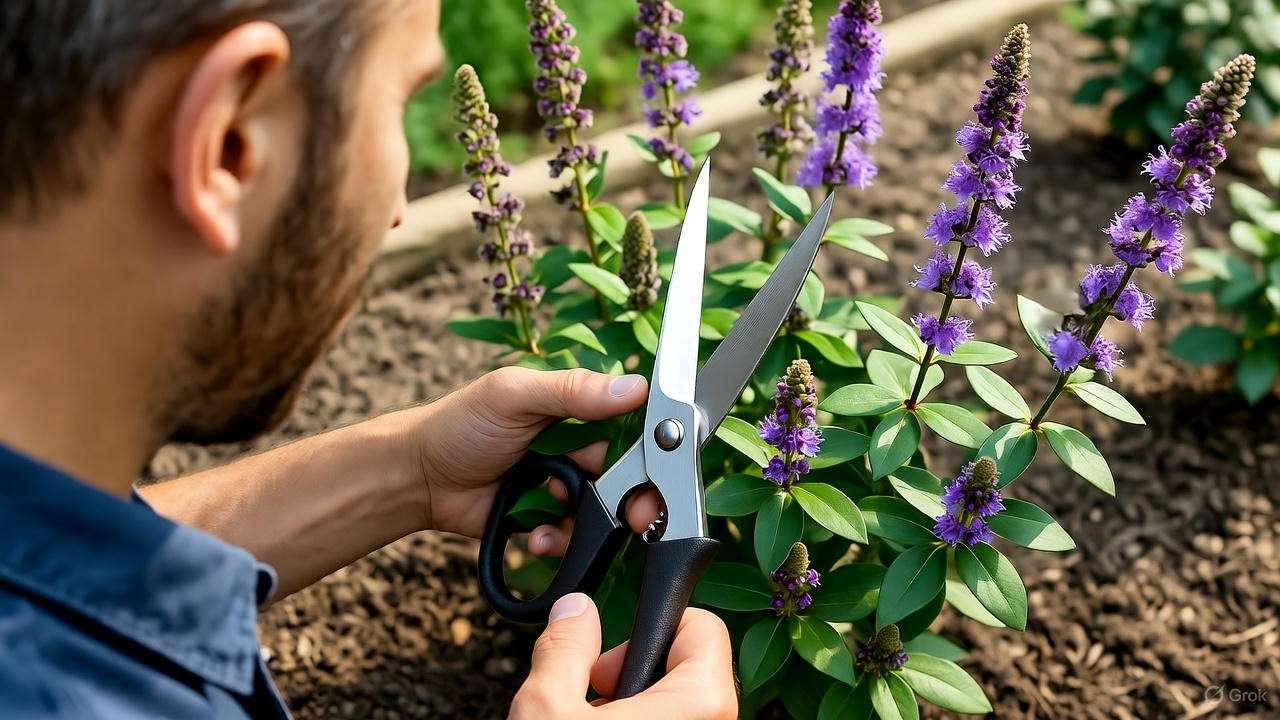
Common Problems and Solutions for Creeping Myrtle 🐞
Pests and Diseases
While creeping myrtle is relatively pest-resistant, it can attract:
- Aphids: Small, sap-sucking insects that cause leaf curling. Control with insecticidal soap or neem oil.
- Spider Mites: Tiny pests that create webbing on leaves. Increase humidity and spray with water to deter them.
- Scale Insects: Hard-shelled pests that weaken plants. Remove manually or use horticultural oil.
Common diseases include:
- Root Rot: Caused by overwatering or poor drainage. Improve soil aeration and reduce watering.
- Leaf Spot: Fungal infections causing dark spots. Remove affected leaves and apply a fungicide if severe.
- Powdery Mildew: White coating on leaves in humid conditions. Improve air circulation and avoid overhead watering.
Eco-Friendly Solution: Introduce beneficial insects like ladybugs to control aphids naturally.
Troubleshooting Growth Issues
- Yellowing Leaves: Often due to overwatering, poor drainage, or nutrient deficiency. Check soil moisture and apply a balanced fertilizer.
- Sparse Growth: Caused by insufficient light or compacted soil. Relocate plants to shadier spots or aerate the soil.
Case Study: A gardener in Ohio noticed their creeping myrtle turning yellow after heavy spring rains. By improving drainage with raised beds and reducing watering, they restored the plant’s vibrant green color within weeks.
Creative Uses for Creeping Myrtle in Your Garden 🌼
Landscaping Ideas
The creeping myrtle plant is a versatile addition to any landscape, offering both beauty and functionality. Here are some creative ways to incorporate it into your garden:
- Ground Cover for Slopes: Use creeping myrtle to stabilize soil on hilly or sloped areas. Its dense root system prevents erosion, while its lush foliage softens the terrain’s appearance. For example, plant it along a steep backyard slope to create a cascading green effect.
- Shaded Garden Filler: In areas where grass struggles, such as under mature trees or in north-facing corners, creeping myrtle thrives. Its ability to grow in low-light conditions makes it a perfect solution for dark, neglected spots.
- Border Plantings: Line walkways, garden beds, or patios with creeping myrtle for a neat, evergreen edge. Its low profile complements taller plants like roses or hydrangeas.
- Companion Planting: Pair creeping myrtle with spring bulbs like tulips or daffodils for a stunning seasonal display. The myrtle’s evergreen foliage hides fading bulb leaves, maintaining a tidy look year-round. It also pairs beautifully with shade-loving plants like ferns or hostas for a layered, woodland-inspired garden.
Inspiration: Create a shade garden by combining creeping myrtle with hostas, astilbes, and coral bells. Add a stone path winding through the bed for a fairy-tale aesthetic.
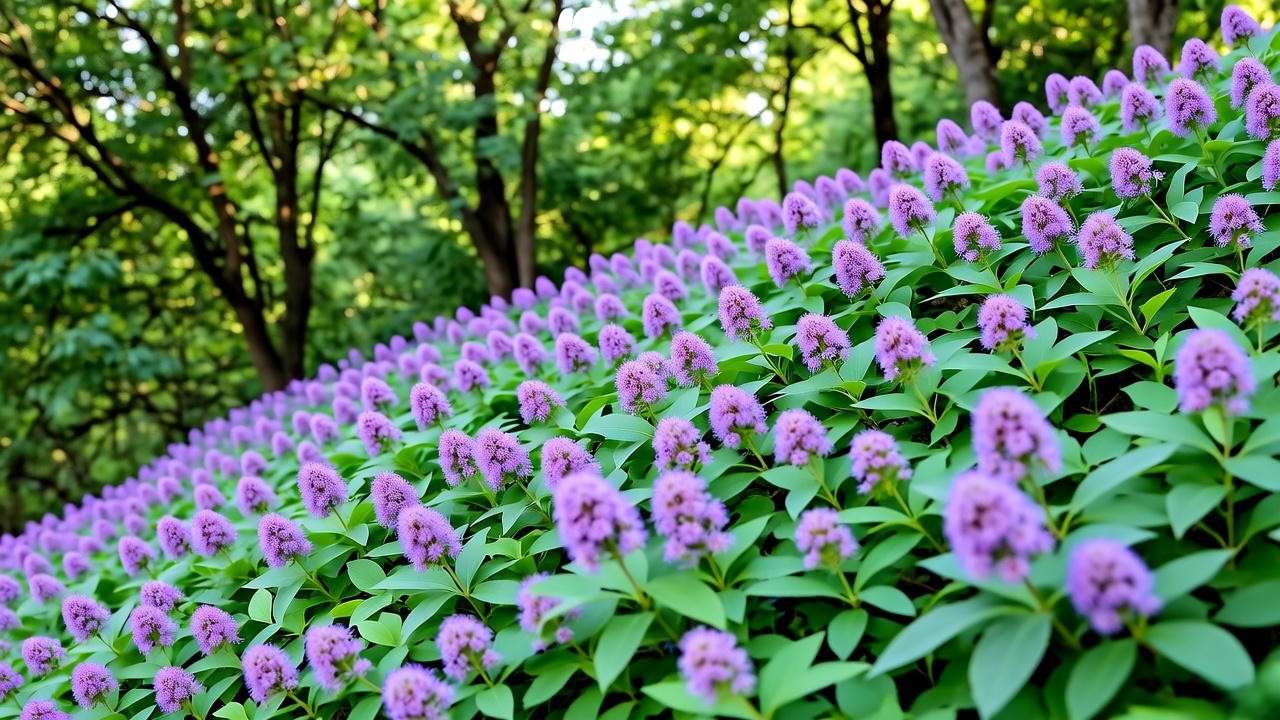
Container Gardening
Creeping myrtle isn’t just for in-ground planting—it shines in containers too! Here’s how to grow it in pots or hanging baskets:
- Choosing Containers: Select wide, shallow pots with drainage holes to accommodate the plant’s spreading habit. Hanging baskets work well for a trailing effect on patios or balconies.
- Soil Mix: Use a well-draining potting mix with added perlite or sand to prevent waterlogging. A mix of 60% potting soil, 20% compost, and 20% perlite is ideal.
- Care Tips: Water container plants more frequently than in-ground ones, as pots dry out faster. Trim back trailing stems to maintain the desired shape.
Pro Tip: Combine creeping myrtle with cascading annuals like lobelia or sweet potato vine in a hanging basket for a vibrant, low-maintenance display 🌸.
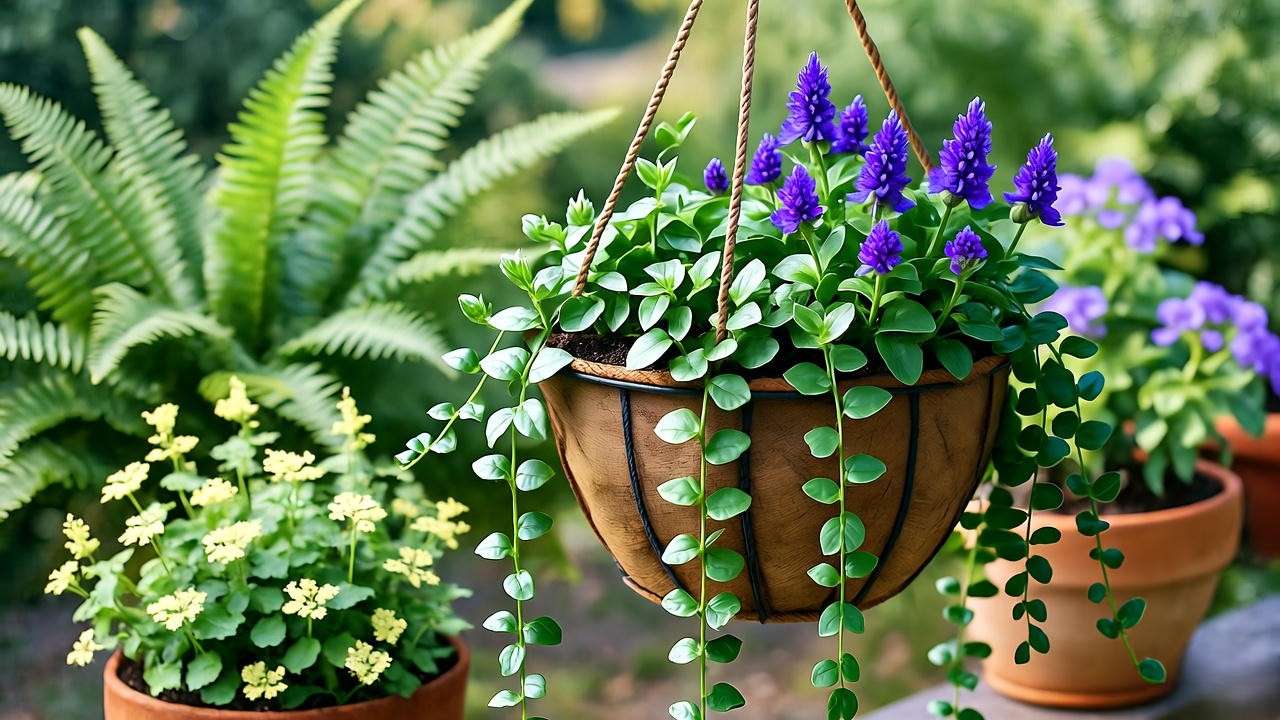
Environmental and Ethical Considerations 🌍
While creeping myrtle is a gardener’s delight, it’s important to plant it responsibly to avoid potential issues. In some regions, particularly parts of North America, Vinca minor can become invasive, outcompeting native plants and disrupting local ecosystems. To ensure ethical gardening:
- Check Local Guidelines: Research whether creeping myrtle is considered invasive in your area. For example, it’s listed as a potential concern in parts of the Pacific Northwest. Contact your local extension service for guidance.
- Control Spread: Use physical barriers like landscape edging or plant in containers to prevent unwanted spread. Regularly monitor and trim to keep it contained.
- Support Ecosystems: When planted thoughtfully, creeping myrtle supports pollinators like bees and butterflies, contributing to biodiversity. Pair it with native plants to create a balanced garden.
Expert Insight: The North American Native Plant Society recommends monitoring ground covers like creeping myrtle in sensitive ecosystems. They suggest using native alternatives like wild ginger (Asarum canadense) in areas where invasiveness is a concern.
FAQs About Creeping Myrtle Plant Care ❓
Here are answers to some of the most common questions gardeners have about creeping myrtle:
- Is creeping myrtle safe for pets? Creeping myrtle is mildly toxic if ingested, potentially causing vomiting or diarrhea in dogs and cats. Keep pets away from the plant, especially if they’re prone to chewing foliage. Consult a veterinarian if ingestion occurs.
- How fast does creeping myrtle spread? Under ideal conditions, it spreads 6–12 inches per year, forming a dense mat within 1–2 years. Growth rate depends on soil quality, light, and watering.
- Can creeping myrtle grow in full sun? While it prefers shade, it can tolerate full sun in cooler climates (Zones 4–6). In hotter regions, provide afternoon shade to prevent leaf burn.
- How do I propagate creeping myrtle? Propagate through stem cuttings or division. For cuttings, snip 4–6-inch stems, remove lower leaves, and plant in moist soil. For division, dig up a section of the plant with roots and replant immediately.
Pro Tip: Propagate in spring for the best success rate, as new growth is more vigorous during this season 🌱.
Conclusion: Why Creeping Myrtle Is a Must-Have for Your Garden 🌸
The creeping myrtle plant is a game-changer for gardeners seeking a low-maintenance, visually stunning ground cover. Its evergreen foliage, vibrant blooms, and ability to thrive in challenging conditions make it a versatile addition to any landscape. Whether you’re covering a shady slope, edging a walkway, or creating a container masterpiece, creeping myrtle delivers beauty and functionality with minimal effort. By following this guide’s expert tips on planting, care, and troubleshooting, you’ll be well-equipped to grow a thriving patch of Vinca minor that enhances your garden year-round.
Ready to transform your garden? Start your creeping myrtle journey today and watch your landscape flourish! Share photos of your lush ground cover on social media or drop your questions in the comments below for personalized advice from our gardening experts. Happy planting! 🌿

